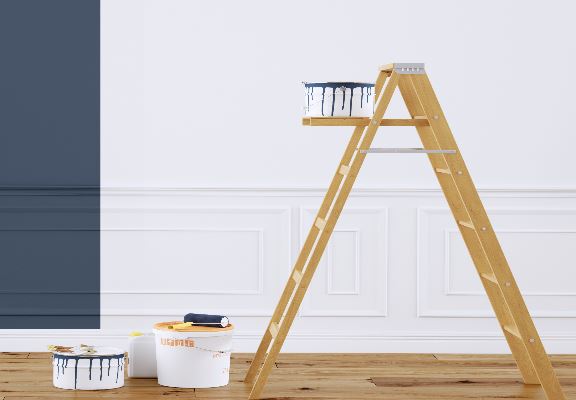Wallpaper
Ways to choose interior paint colours
Choosing paint colours can seem daunting. There are nearly endless options and combinations. You can paint walls, trims, and ceilings, making the choice even harder. This guide will help you break down colour choices for interior paint so the process is a little less arduous.

The start of a painting project is always exciting!
Oil vs latex
There are many different types of paint from which to choose. Paint comes in different sheens as well as either oil or latex. Oil-based paint is great for priming real wood fixtures such as trims. Latex is a good top coat for oil primer and is commonly used for interior walls. Do note that oil paint takes longer to dry, so you will have to budget more drying time for your project.
Sheen
Paint comes in different sheens, or gloss levels. The general rule is that the higher the sheen, the easier the paint will be to clean. With high-gloss sheen, you will be able to wipe down the wall with a damp sponge to clean most stains. However, this also means your walls will give off a shine that may be unpleasant. High-gloss paint also shows imperfections more than matte paint. If your walls are already damaged, then high-gloss paint will draw more attention to the flaws.
An alternative option is satin sheen paint. This paint does still have a shine to the finish, but it is less so than full-gloss paint. It is also slightly cheaper than gloss paint. Satin is a good blend between matte and gloss as it is easy to clean but less shiny.
The final option is matte paint. This type of paint is ideal for walls with preexisting imperfections, as the matte hides flaws well. The downside is that matte paint shows dirt easily and does not clean as well as the other paint options. A common solution to this problem is using eggshell sheen. It hides imperfections like a matte but is still easy to clean like a gloss.
Colours

Don’t forget to use the colour wheel.
A good place to start when choosing paint colours is the colour wheel. Playing with different shades and pigments will help you narrow in on your ideal room colour, but it all depends on what you are going for. Different colours will have different effects on the feel of a room. As DIY.com explains:
Colours near each other on the colour wheel such as blue and purple are analogous to each other and will allow one colour to stand out more. Colours opposite each other on the colour wheel such as green and red are complementary to one another and will nicely play off each other. Staying within the same shade of colour (i.e. greens) will give you a subtle and soothing look.
Sampling
No matter which colour you choose for your rooms, be sure to sample it first. There is nothing worse than buying a giant can of paint only to realise you don’t like the colour. You’ll often see a pile of cans of returned paint when you go into a paint store. Sampling helps you avoid contributing to that pile. Take small samples of paint you are considering and test them out. Be sure to watch the paint in different lighting to see how the colour will change.
Colour consultants
If you are truly stumped when it comes to choosing colours, consider bringing in a colour consultant. These are professionals who are trained in colour theory. They can provide you with suggestions or even create a custom colour theme for your house.
Provide them with your inspiration for each room and what feel you are going for. Also, show them the rooms you are painting in different lighting so they can see how colours might be affected. They will take this information and deliver a great colour map for your rooms.
Choosing paint can be tricky. There are so many options that it can be overwhelming. Remember to consult the colour wheel, consider different lighting situations, and bring in an expert if you need some help. Hopefully, this guide has helped you make some sense out of the process.


The color you choose for the walls of your home will have a psychological impact not only on your guests but also on you. To enhance your living experience, it is important that you choose the right color combination which complements the design and décor of your home.
I totally agree with Sandra that choosing paint can be tricky. To pick the perfect color for your home you will need to consider the lighting situation, color wheel and surroundings mean you will need to select the color according to your furniture and all your belongings to give an attractive interior of the room.
While a color wheel will help you create different combinations, it is also possible that you might want to stick to a single color. In that case, you can create some variance by using different finishes. Using different finishes will add different textures to the walls in your home. So, even if you use the same color in multiple rooms, it won’t take away from the ambiance or décor.